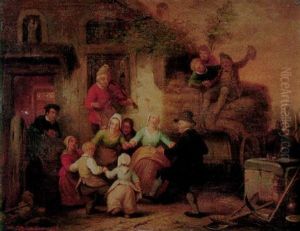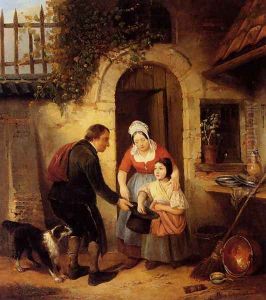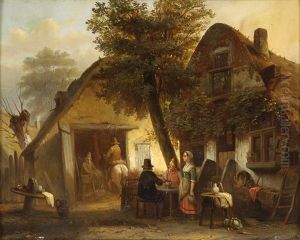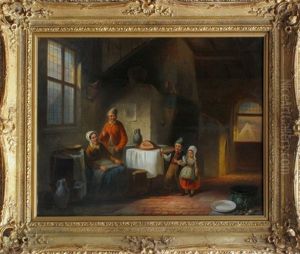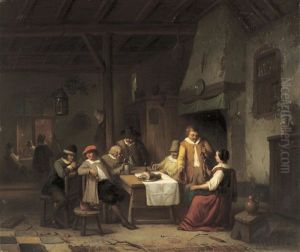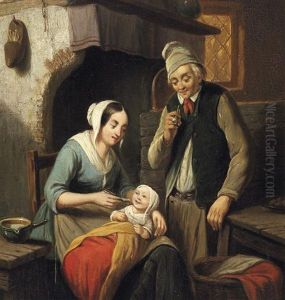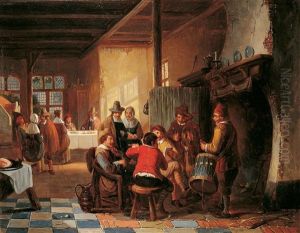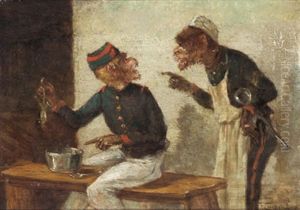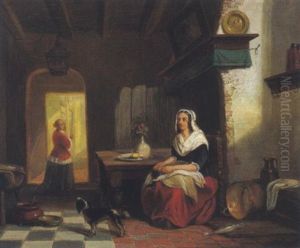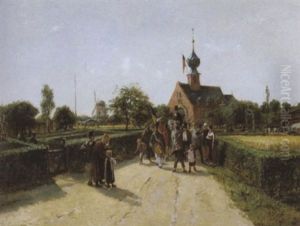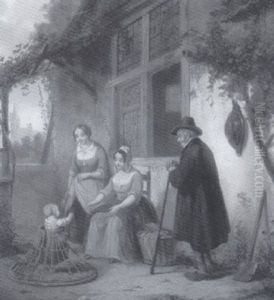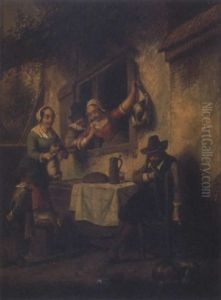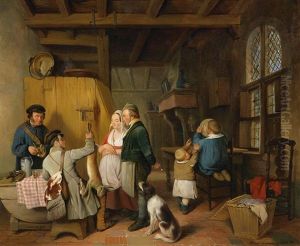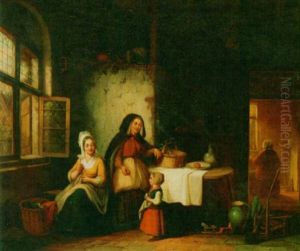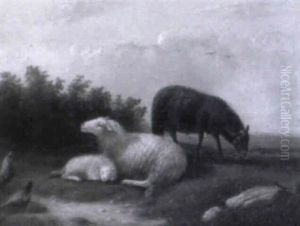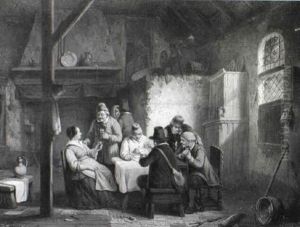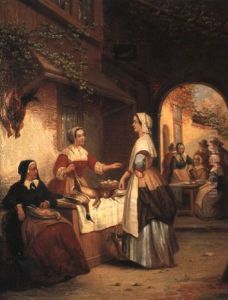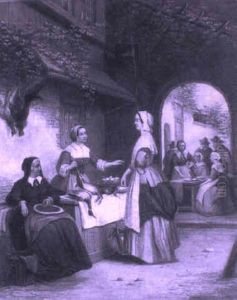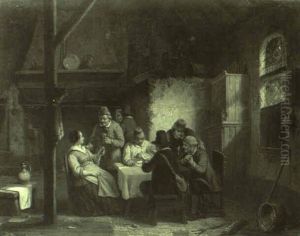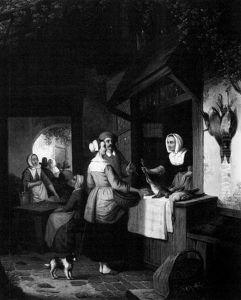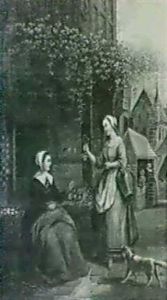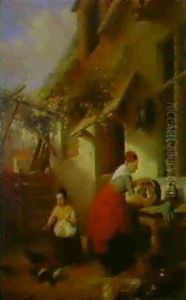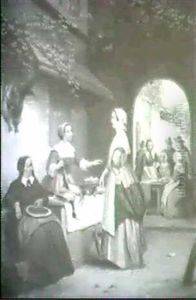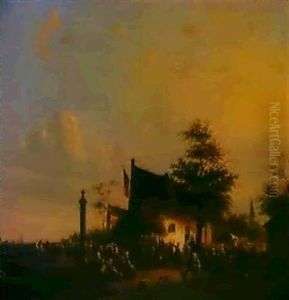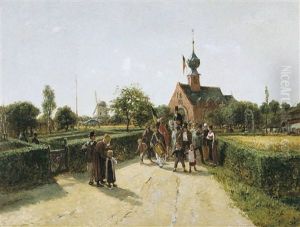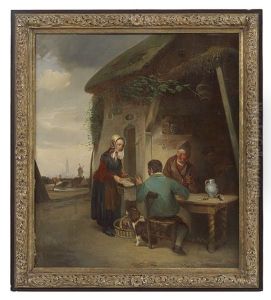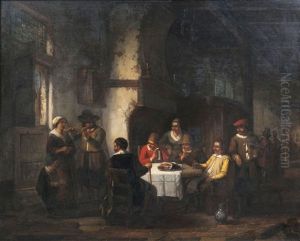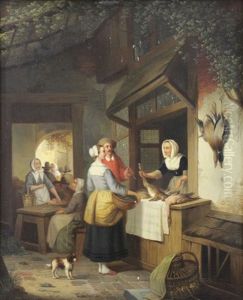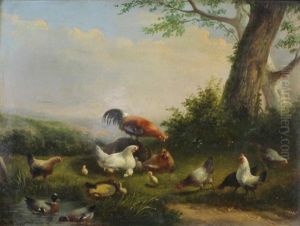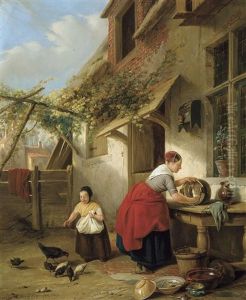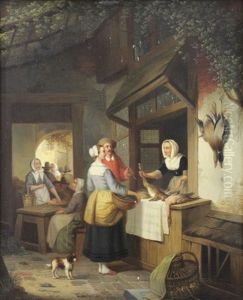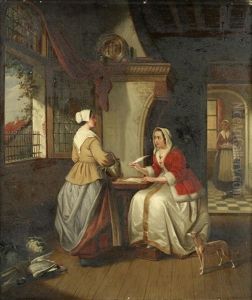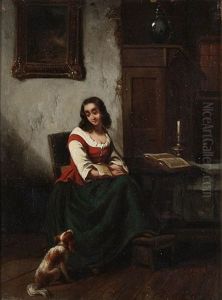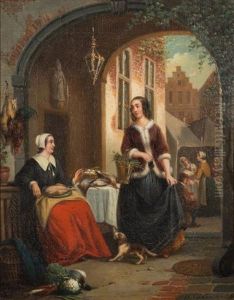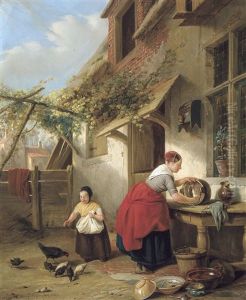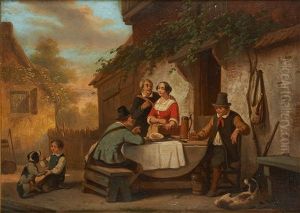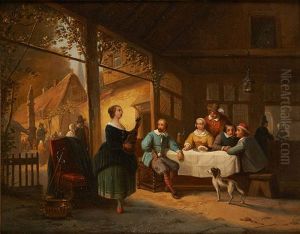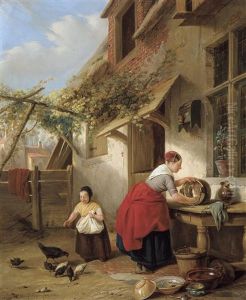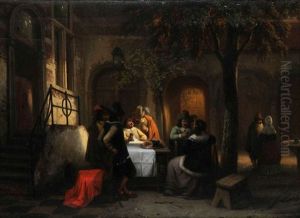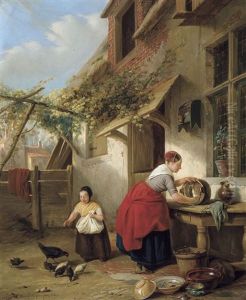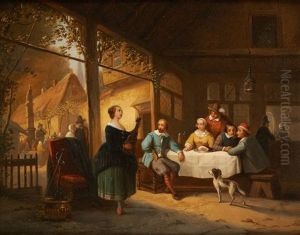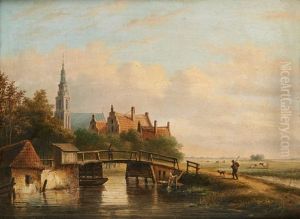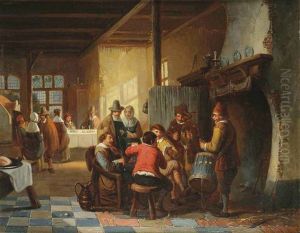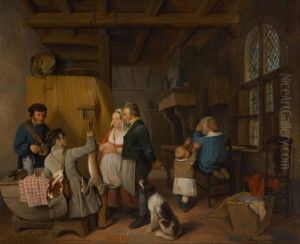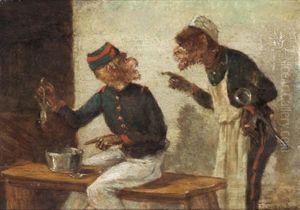Henri Joseph Gommarus Carpentero Paintings
Henri Joseph Gommarus Carpentero was a Belgian artist, born on August 14, 1874, in Antwerp. He is known for his work as a painter, illustrator, and engraver, having developed a distinctive style that was largely influenced by the artistic movements of his time, including Impressionism and Symbolism.
Carpentero showed an early talent for the arts, prompting him to pursue formal education in the field. He attended the Royal Academy of Fine Arts in Antwerp, where he honed his skills in painting and engraving. His education provided him with a strong foundation in traditional techniques, yet he was also open to the innovations that were sweeping through the art world towards the end of the 19th century.
After completing his studies, Carpentero embarked on his artistic career, participating in various exhibitions and gaining recognition for his works. His paintings often featured landscapes, still lifes, and portraits. The play of light and shadow in his landscapes reveal an impressionistic influence, while his portraits are noted for their psychological depth and realism.
In addition to painting, Carpentero was also an accomplished illustrator and engraver. His illustrations appeared in numerous publications of the time, allowing him to reach a wider audience and contribute to the visual culture of the era. His engravings, characterized by meticulous detail and exquisite craftsmanship, are considered some of the finest from this period in Belgium.
Carpentero's work was appreciated not only for its aesthetic qualities but also for its emotional resonance. He had the ability to capture the spirit of his subjects, imbuing his works with a sense of intimacy and immediacy that resonated with viewers. Throughout his career, he remained active in the Belgian art scene, influencing younger artists and contributing to the cultural heritage of his country.
Henri Joseph Gommarus Carpentero passed away on September 25, 1956, in Antwerp. Today, his works are part of numerous private collections and museums, where they continue to be studied and admired for their beauty and historical significance. Despite not being as widely known as some of his contemporaries, Carpentero's contributions to the art world remain an important part of Belgium's artistic legacy.
